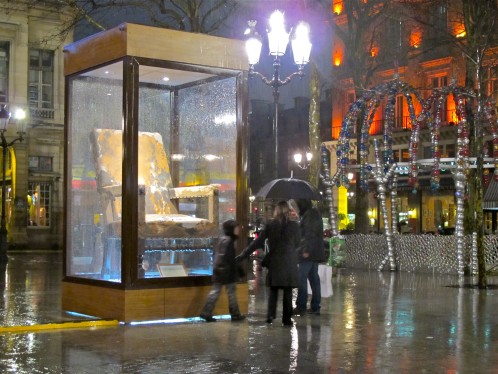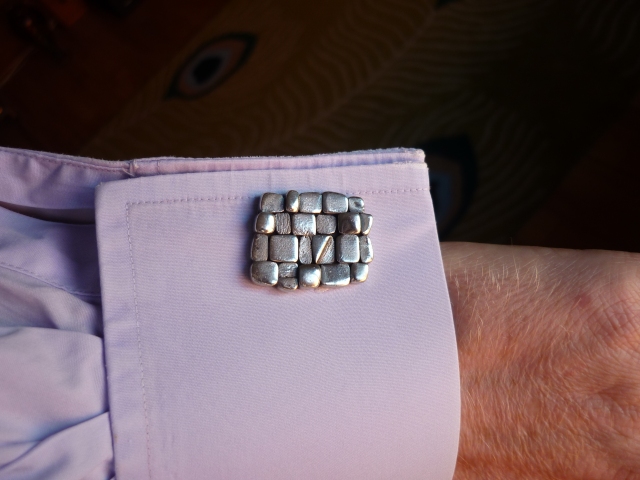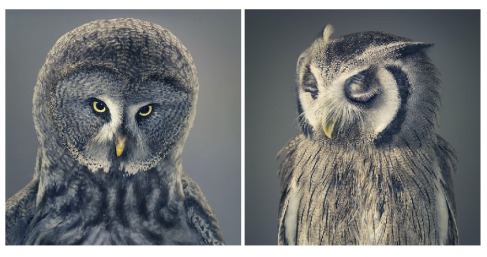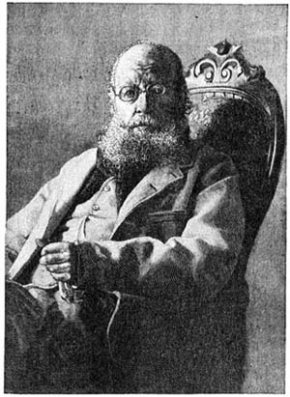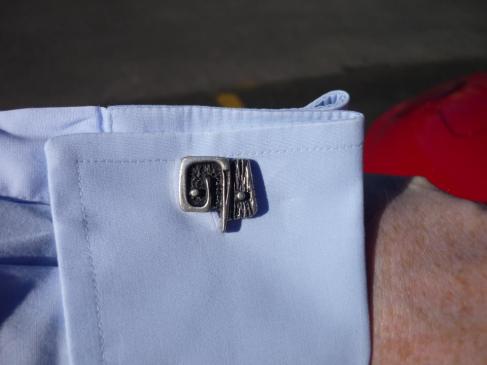The myth of Sisyphus is a particularly grim and haunting one. As a punishment for his repeated deceit, the gods condemned him to roll a boulder up a hill, only for him to see it roll back down and to have to repeat this action, with its reversal, for all eternity. They didn’t mess around, these gods, and there is a malign genius behind the chastisement which makes it almost beautiful were it not for the appalling infliction of frustration and repetition. It is difficult to know what constitutes the worst aspect of this sentence: the fact that it is repeated day in and day out; the exertion expended in rolling up the immense boulder; or the aimlessness of it all. I suspect it is the latter; this task is entirely void of any purpose or goal other than to impose perpetual suffering. Not content with this case, classical mythology provides us with four other examples of similar incessant torture with Tityos (whose liver was slowly pecked out and devoured by two vultures during the day and which grew back during the night), Prometheus (whose liver was extracted by an eagle, perhaps a touch more merciful than two vultures, during the day then nocturnally regenerated – the focus on the liver has nothing to do with alcohol for the Greeks believed it was the nucleus of human emotions), Tantalus (who was condemned to stand in a pool of water underneath a fruit tree with low-hanging branches, with the fruit ever eluding his grasp and the water always receding before he could take a drink), and Ixion (whose fate was to be attached a winged fiery wheel which span without cease, giving a whole new meaning to coming full circle). Little wonder that these populations were to embrace Christianity so wholeheartedly as its central message of forgiveness is completely and starkly alien to the vengeful and vindictive nature of the pagan deities.
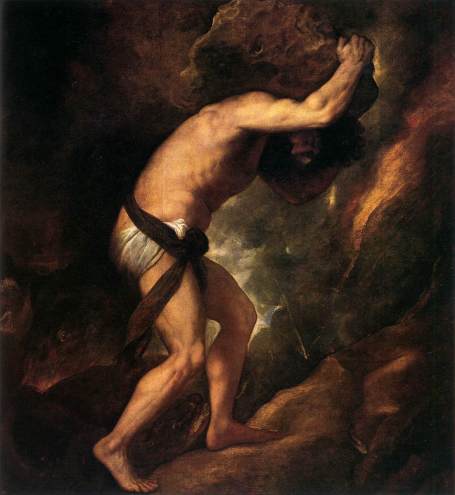 I have always liked Titian’s version of the Sisyphus story, above, completed in 1549. Many artists choose not to show Sisyphus’s face, which creates the sense that the individual is overshadowed by his fate and overwhelmed by the boulder. Titian, on the other hand, does show a glimpse of his face and the blank, expressionless eyes of the subject adds a much more bleak undercurrent to this scene. The light, glimpsed in the distance, evokes the possibility of salvation, but it is one which will come with Christianity picking up on the symbolism of Christ being the rising Sun in the east. Above all, the contortions of the protagonist suggest an inverted question mark. A question mark would imply an answer but there is no solution or resolution impossible with this scenario nor the ideology which has created it and the inversion underscores the perverse and aimless nature of what we see. In short, the painting apparently shows a mythological theme yet is a work of orthodox Christianity. The year it was painted should also give us a clue, since Europe was in the midst of violent religious upheaval resulting from the establishment of Protestant sects. Truth and punishment were therefore burning topics.
I have always liked Titian’s version of the Sisyphus story, above, completed in 1549. Many artists choose not to show Sisyphus’s face, which creates the sense that the individual is overshadowed by his fate and overwhelmed by the boulder. Titian, on the other hand, does show a glimpse of his face and the blank, expressionless eyes of the subject adds a much more bleak undercurrent to this scene. The light, glimpsed in the distance, evokes the possibility of salvation, but it is one which will come with Christianity picking up on the symbolism of Christ being the rising Sun in the east. Above all, the contortions of the protagonist suggest an inverted question mark. A question mark would imply an answer but there is no solution or resolution impossible with this scenario nor the ideology which has created it and the inversion underscores the perverse and aimless nature of what we see. In short, the painting apparently shows a mythological theme yet is a work of orthodox Christianity. The year it was painted should also give us a clue, since Europe was in the midst of violent religious upheaval resulting from the establishment of Protestant sects. Truth and punishment were therefore burning topics.
The myth of Sisyphus was the title and subject of a brilliant 1942 essay by Albert Camus, who begins the work by stating that the only truly serious philosophical question is suicide. The book uses the figure as a study in despair and absurdity, asking the question of whether the apparent futility of existence justifies suicide as an exit strategy. The one aspect which has always struck me in this work is that Camus is most interested in Sisyphus’s thoughts as he walks down the hill to begin anew. It is during this time that he becomes truly tormented and, ultimately, truly tragic. Camus does not embrace faith as an option, though is very far from being dismissive of it and has more sympathy towards religious belief than Sarte and de Beauvoir. The work, which opened with a startling assertion, ends with an equally surprising invitation: we must imagine Sisyphus happy. Critics, inevitably, are divided about this last word but to me it’s always meant that the power of the human imagination can defeat anything no matter how dark. This is the mental revolt of which the philosopher speaks.
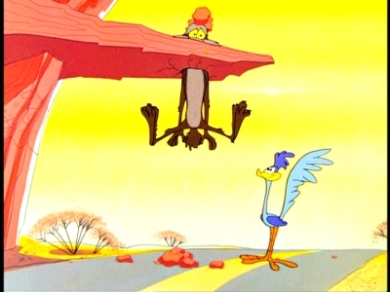 I’m afraid that my first exposure to this Sisyphean archetype was not through reading about the myth or even via a cinematic version of it such as Groundhog Day (1993), but rather through my favorite childhood cartoon, the Looney Tunes-produced Wile E. Coyote and Road Runner shorts. The Coyote tries again and again to outwit and capture the Road Runner, but never succeeds. It is an eternal situation for he is quite impervious to death, suffering mishaps which should have him shake off his mortal coil (falling off cliffs, being pulverized by rocks, being blown up, or having his head imploded by an anvil) yet he rises, Lazarus-like, to begin anew. The cartoon is hopelessly formulaic, more than most cartoons, yet the constant ingenuity of the Coyote and his endless frustration provide a degree of pleasure. I secretly rooted for the Coyote and wanted him to succeed, one day. What I didn’t realize is that this guilty longing is, in fact, the premise of the entire concept. Our sympathies are not with the rather annoying, less intelligent bird but with the cunning yet hapless lupine foe. Many of us only become aware of this when having drunken conversations in our adulthood with friends who shared the same covert and naughty desire.
I’m afraid that my first exposure to this Sisyphean archetype was not through reading about the myth or even via a cinematic version of it such as Groundhog Day (1993), but rather through my favorite childhood cartoon, the Looney Tunes-produced Wile E. Coyote and Road Runner shorts. The Coyote tries again and again to outwit and capture the Road Runner, but never succeeds. It is an eternal situation for he is quite impervious to death, suffering mishaps which should have him shake off his mortal coil (falling off cliffs, being pulverized by rocks, being blown up, or having his head imploded by an anvil) yet he rises, Lazarus-like, to begin anew. The cartoon is hopelessly formulaic, more than most cartoons, yet the constant ingenuity of the Coyote and his endless frustration provide a degree of pleasure. I secretly rooted for the Coyote and wanted him to succeed, one day. What I didn’t realize is that this guilty longing is, in fact, the premise of the entire concept. Our sympathies are not with the rather annoying, less intelligent bird but with the cunning yet hapless lupine foe. Many of us only become aware of this when having drunken conversations in our adulthood with friends who shared the same covert and naughty desire.
Seth MacFarlane did what we all wanted to do: he had the Coyote finally triumph over his nemesis in a 2’09-long short entitled “Die, Sweet Roadrunner, Die”, available here. After enjoying the roasted bird with his friend, he is asked what he will then do with his life, and the poor animal, obsessed with the chase for two decades does not know. He ends up on the brink of suicide then finds religion. MacFarlane roundly demonstrates why the Coyote must never kill his prey; it is his essence, his very life’s mission to pursue, and it is not without purpose since it gives him his central purpose. In fact, Chuck Jones’s original series did entertain the concept a couple of time, here. In the first, he finally catches the Road Runner only to see the bird has grown to gigantesque proportions (without explanation, but who needs explanations in an absurd world?). Breaking the fourth wall, the unfortunate dog holds up a sign to the view displaying “Okay, wise guys, you always wanted me to catch him. Now what do I do?” The episode ends with this surreal outcome. The second occasion on which the bird is defeated occurs towards the end of a regular episode and also breaks the fourth wall. The scene pans out into a television screen and then we see two boys seated in front of it, with one remarking “Sometimes I feel very sorry for the coyote. Sometimes I wish he’d catch him”. Thereupon we return to the action and the Coyote kills the bird, roasts him, and we see him feasting on the roasted carcass. We return to the two boys visibly upset at the fulfillment of their secret desire.

Like the fairy tales and fables from which cartoons spring, the cartoon acts as a rich metaphor. There are two principal features of the western desert location in which all the shorts take place: there are no humans (and this is consistently the case; sometimes post trucks deliver packages but the driver is never visible) and there is no sound other than the music, the beep beep of the bird (which sounds like “meep meep”), and later on the very occasional whimper a dog in pain, which served to increase our sympathy towards the predator. The latter fact, together with the slapstick hyperbole, give the shorts the air of silent films. Wanting the audience to identify with someone who is evil is nothing new; we rather like Frank Underwood in House of Cards and tolerate Dexter’s dark side in the series of the same name, despite the inescapable depiction of their wrong-doing. Hitchcock often played on this. In Psycho (1960), immediately after the murder of the first victim, we see Norman Bates pushing her car into a swamp. As it is slowly being enveloped into the swamp, it stops a couple of feet from its end. Even though we have just witnessed the savage murder of the young woman in the shower, the audience wants the car to sink fully into the swamp at that moment. It does after a brief pause, as if through the energy of the audience’s collective wish for it to do so.
In a thought-provoking article (Douglas R. Bruce, “Notes toward a Rhetoric of Animation: “The Road Runner” as Cultural Critique,” Critical Studies in Media Communication 18 (2001), 229-45), the author suggests that the cartoon “is, above all, an anti-technological use of technology” (232). Rather than rely on his own innate and natural talents, the Coyote has recourse to the faceless Acme Corporation (a rather delightful list of Acme products is available here). The indefatigable coyote is also often depicted with a knife and fork in his hand and a napkin wrapped around his neck, a visual portrayal of his reliance on non-natural tools for he is a beast and has usurped the implements of humanity, in particular those of civilized society. The ultimate message, one which would resonate with the audiences of the 1950s and 1950s living through the Cold War and the potential of nuclear weapons is: “As these technologies distance us from the natural world, they also may alienate us from each other and even from ourselves, as our lives revolve increasingly around using and maintaining technological gadgets” (234). Like fairy tales which have rich layers of meaning which often escape a juvenile readership, this cartoon is immensely subversive in its anti-establishment message. Many Native American traditions believe that the coyote accompanied the first humans in the birth of the world, a reason for which it was never killed by some tribes. The location of the cartoons certainly hints at the “wild west” and a clash of two opposing ideologies. Little wonder that the animated Coyote did not succeed in his quest.
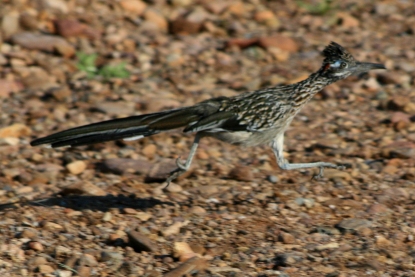
As to the real road runner, I assumed it was a fictional bird, growing up in the rural north of England. In fact, I’ve now seen it; not in Arizona or New Mexico (it being the state emblem of the latter) but rather in southern Kansas. It is a very curious bird, for the greater roadrunner (Geococcyx californianus, a member of the cuckoo family) chooses to move around by running, even though it can fly, and has a particular penchant for roads. Just as some domestic pets imagine they’re human, so too this bird seems to be under the impression that highways are its playground. Even though its call does not, disappointingly, resemble a “beep, beep”, it does have speed in common with its animated counterpart, for it can reach speeds 26 miles an hour. It has a slightly comical gait while running and seeing it in action rather makes one think of Ronald Reagan: impressive but also somewhat ridiculous at once.
 Today’s cufflinks depict this wonderful bird, a quirky and beautiful pair with an impressive size, being 1 3/4″ in length. They’re made out of pewter and have much detail, crafted by Ray Graves with his characteristic “Gŕā-Wun” maker’s mark. Graves is an important figure in the modernist jewelry movement and his store operated in Scottsdale, Arizona, from 1959 to 2001, when he retired at the age of 80 years old. This pair looks like it dates from the late 1950s or early 1960s (also the period during which the cartoon was appearing). His creations often depict the west (cacti, desert scenes, wildlife) but he was particularly fond of the indomitable road runner. I think his affection may be seen in this gently executed pair. The road runner, in opting for its strong legs (and using a dark skin patch on its rear as an effective solar panel to raise its body temperature by 9 degrees before running) over its wings, is surely a symbol of stubbornness. Perhaps, then, it’s not so surprising that the Coyote was never victorious over this little headstrong avian marvel.
Today’s cufflinks depict this wonderful bird, a quirky and beautiful pair with an impressive size, being 1 3/4″ in length. They’re made out of pewter and have much detail, crafted by Ray Graves with his characteristic “Gŕā-Wun” maker’s mark. Graves is an important figure in the modernist jewelry movement and his store operated in Scottsdale, Arizona, from 1959 to 2001, when he retired at the age of 80 years old. This pair looks like it dates from the late 1950s or early 1960s (also the period during which the cartoon was appearing). His creations often depict the west (cacti, desert scenes, wildlife) but he was particularly fond of the indomitable road runner. I think his affection may be seen in this gently executed pair. The road runner, in opting for its strong legs (and using a dark skin patch on its rear as an effective solar panel to raise its body temperature by 9 degrees before running) over its wings, is surely a symbol of stubbornness. Perhaps, then, it’s not so surprising that the Coyote was never victorious over this little headstrong avian marvel.

